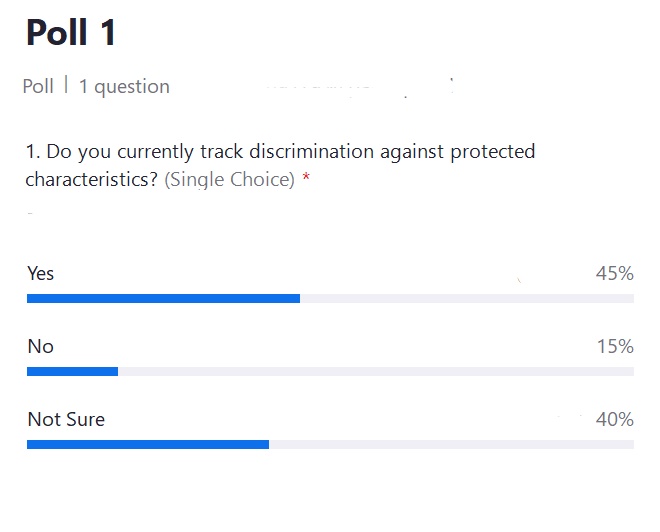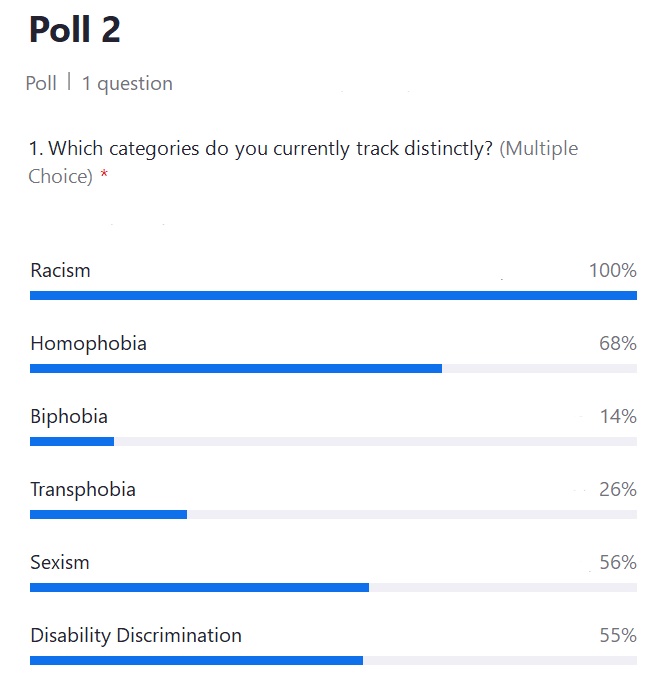Safeguarding: Protected Characteristics
_1000.png)
This blog is based on Judicium’s Safeguarding ‘Sofa Session’ from the 3rd of May, with our resident expert Helen King. This session focused on what protected characteristics are and which are most relevant to schools, how they intersect with child-on-child abuse, and how best to record, analyse and report on this data.
What are protected characteristics, and which are the most relevant to schools?
The Equality Act came into force from October 2010 providing a modern, single legal framework with clear law to better tackle disadvantage and discrimination.
There is guidance from the Equality and Human Rights Commission about what the equality law means for you as an education provider. For further information you can look at the guidance document from the Equality and Human Rights Commission titled ‘What equality law means for you as an education provider: schools.’
Protected characteristics are:
- Age
- Disability
- Gender reassignment
- Marriage and civil partnership
- Pregnancy and maternity
- Race
- Religion or belief
- Sex
- Sexual orientation
These are all relevant to schools, except marriage and civil partnership and age.
NB: There are exceptions which enable single-sex schools to admit only pupils of one sex and, for schools with a religious character, to enable them to have admissions criteria which gives preference to members of their own religion.
When it comes to harassment, which is unlawful under the Equality Act, schools need to be aware that this relates specifically (in schools) to disability, race, and sex.
Where other prejudice behaviour is exhibited, it may fall under direct or indirect discrimination.
Harassment provisions do not explicitly apply to the protected characteristics of gender reassignment, sexual orientation or religion or belief in relation to schools. However, where unwanted conduct related to any of these protected characteristics results in a pupil suffering disadvantage that would constitute direct discrimination.
As a school you have legal duties to your pupils in relation to bullying and you must ensure that you treat all bullying on the grounds of a protected characteristic with the same emphasis as any other form of bullying.
What does Keeping Children Safe in Education (KCSIE) say?
KCSIE references the Equality Act 2010 in Part Two. It explains that schools and colleges have obligations under the Equality Act 2010 and must not unlawfully discriminate against pupils because of their sex, race, disability, religion or belief, gender reassignment, pregnancy and maternity or sexual orientation. Moreover, schools should carefully consider how they are supporting their students regarding protected characteristics.
Schools are allowed to take positive action, where proportionate, to deal with disadvantages students may face who have a particular protected characteristic e.g., reasonable adjustments for students with SEND or positive action to support girls where evidence of them being disproportionately subject to sexual violence or harassment.
One of the lesser-known updates to KCSIE this year was to clarify the link between legal duties and safeguarding when it comes to the Equality Act 2010 and the Public Sector Equality Duty. This was to make the role that schools have in relation to adhering to this clearer.
Furthermore, in Part Two under the section regarding opportunities to teach safeguarding, it states that schools play a crucial role in preventative education. There should be a whole-school approach that prepares students for life in modern Britain and creates a culture of zero tolerance for sexism, misogyny, misandry, homophobia, biphobia, transphobia and sexual violence/harassment.
What will inspections require?
As part of the Ofsted inspection framework, schools should expect to share with inspectors on the morning of an inspection records and analysis of:
- Bullying
- Discriminatory and prejudiced behaviour (either directly or indirectly)
- These should include racist, sexist, disability and homophobic/biphobic/transphobic bullying.
- Use of derogatory language and incidents.
This is where the duty to protect students with protected characteristics intersects with the inspection framework.
In summary, protected characteristics are protected under the Equality Act, referenced in KCSIE and a component of Ofsted inspections.
Polls


At Judicium, we typically find racism and bullying is tracked but other areas are not explicitly tracked or may be tracked in a different way.
To complicate matters, often this type of discrimination may be dealt with by the pastoral team which could be separate from the safeguarding team. As such, the DSL may not have oversight of these records, or the pastoral team may not realise the importance of recording these accurately.
It’s important to ensure these systems are not siloed and where they are managed by different areas of the leadership team, there are clear systems and processes in place for recording, analysing, and evaluating the incidents and data. This is particularly important because of the obvious overlap with child-on-child abuse.
In addition, schools have asked for guidance on how to best support transgender students. The government has suggested that this will be published this term. Although, we cannot give specific guidance in this area today because of the lack of statutory guidance available, the ASCL, Chartered College of Teaching, Confederation of Schools Trust, ISBL, NAHT and NGA have worked to develop a document called ‘Guidance for maintained schools and academies in England on provision for transgender pupils’ published in November 2022. This may support some schools or Trusts to navigate this area.
How do protected characteristics intersect with child-on-child abuse?
KCSIE states that child-on-child abuse is most likely to include, but may not be limited to bullying, (including cyberbullying, prejudice-based and discriminatory bullying).
It states in Part One of KCSIE if staff have any concerns regarding child-on-child abuse they should speak to their DSL (or a deputy).
It also states that schools should have within their Child Protection policy:
- Procedures to minimise the risk of child-on-child abuse.
- Systems in place for children to confidently report abuse, knowing their concerns will be treated seriously.
- How allegations of child-on-child abuse will be recorded, investigated, and resolved.
- Clear processes as to how victims, perpetrators and any other children affected by child-on-child abuse will be supported.
- A statement which makes clear there should be a zero-tolerance approach to abuse, and it should never be passed off as ‘banter’, ‘just having a laugh,’ etc.
At Judicium, we tend to find is sexual harassment and violence under child-on-child abuse is dealt with via one means and that bullying can be dealt with by another.
For example, an allegation that a male student touched the thigh of a female student would likely be reported to the DSL, recorded via the safeguarding record-keeping system with processes aligning with Part Five of KCSIE being followed. Whereas a report of bullying a child based on them having a disability is more likely to be reported to the pastoral lead and dealt with via the behaviour policy.
We recommend that you may wish to consider your current procedures to streamline them.
Questions to consider:
-
Are you confident that staff in your school can identify protected characteristics and log prejudice behaviour in this area?
-
Are there different reporting routes for different forms of child-on-child abuse?
-
Is a different member of staff/team responsible for different forms?
-
If so, is there a way for both leaders of the respective areas to have oversight of the other?
-
Do you need to sit down with both leaders and agree on what happens when there is an overlap?
-
Are you confident all your incidents are being logged or recorded in a place where you can pull this information from? (Ideally this information is not replicated and is available in one place.)
Possible Solutions:
-
Electronic record-keeping systems are set up so staff can log prejudice behaviour, child-on-child abuse inc. sexual violence and harassment in one place.
-
The DSL and pastoral lead have access to these incidents so that the pastoral lead can consider sanctions and the DSL can consider the safeguarding response as required.
-
Both the DSL and Pastoral Lead are aware of the processes for how to deal with child-on-child abuse, e.g., support for victim and perpetrator.
-
Keep a central log of any incidents of prejudice behaviour against protected characteristics, sexual violence and/or sexual harassment and bullying.
-
The relevant staff from both teams should have access to populating this.
-
How best to record, analyse and report on this data?
One common pitfall a school may fall into is when records are kept, but there is no analysis of them.
Schools and Trusts should be trying to minimise incidents of prejudice behaviour against protected characteristics or discrimination by utilising education and their curriculum. However, you could be a lot more strategic regarding your data.
Does your recording system allow you to pull data so that you can:
- Analyse the prevalence of prejudice behaviour by year group?
- Analyse the prevalence of prejudice behaviour by gender or by other groups?
- Analyse the prevalence term-on-term or year-on-year?
- Could you even consider online or offline, in school or outside of school etc.
You are expected to know what the current situation is regarding these areas, whether it is relatively worse or better when comparing it to other year groups, student groups or academic years and to also be able to explain what you have done or are doing to counter it. NB: This is a good activity to get Governors involved in as it helps them with their strategic challenge remit.
Examples:
- I look at my data set and I see that last year, there were four incidents of homophobic language being used in year 3. Work was conducted at the time to address this and there were no further incidents that academic year. However, I look at the data this year and find 6 incidents of homophobic language being used in year 4. This is the same cohort that were in year 3 last year. I dig further and find that these 6 incidents have taken place on the football pitch at lunch time between students. I can now look to address this further and target my intervention.
- I look at my data set for transphobic comments and notice that there was none last academic year. However, this academic year there have been 10 incidents across the school, and I am not sure where this has come from. Is it because it was underreported before? Is it because it has been a bit more of a focus this year? Is it because of individual students? I decide I need to review those incidents in a bit more detail to try to reduce the incidents going forward.
- I look at my data set and find that incidents of bullying between boys have reduced this academic year by 50%. We completed some work with students in PSHE last year about appropriate relationships, including friendships and what a positive friendship and relationship looks like. We focused on this with male stereotypes. We felt it was successful, and the data now suggests that to be the case.
Suggestions:
You might also consider doing surveys with students to determine whether their experience of some of these areas aligns with your records. For instance, you may find they think that racism is an issue in the school, but you have very few recorded incidents.
The result may allow you to consider whether there is an issue with under-reporting, problems with recording, and what more could be done to rectify it. We recommend trying to be proactive in tackling problems. For Judicium clients, we audit some of these areas and support schools to record, analyse and action improvements, supporting them to be compliant with best practice around safeguarding.
You can follow us on Twitter: @JudiciumSG @JudiciumEDU
Safeguarding eLearning Courses
If you’d like to review Judicium’s forthcoming sofa sessions please click here
© This content is the exclusive property of Judicium Education. The works are intended to provide an overview of the sofa session you attend and/or to be a learning aid to assist you and your school. However, any redistribution or reproduction of part or all of the contents in any form is prohibited. You may not, except with our express written permission, distribute or exploit the content. Failure to follow this guidance may result in Judicium either preventing you with access to our sessions and/or follow up content.
Related content
.png)
This is a summary from Judicium’s Safeguarding and Thrive ‘Sofa Session’ from 3rd December, with our Judicium Safeguarding consultant Joanne Bocko, Thrive Head of Innovation and Principal Trainer, Viv Trask-Hall and Director of Thrive, Tom Preston. Drawing on decades of combined experience in safeguarding, governance, SEND, leadership, and mental health, the panel unpacked how the framework’s shifts will impact schools, what Ofsted will be looking for, and how leaders can position themselves for success.

This is a summary taken from Judicium’s SEND and Safeguarding ‘Sofa Session’ from 5th November, with our Safeguarding and SEND consultants Rik Chilvers and Simon Hanley. In this session we discuss the new SEND and Safeguarding toolkit and how to best prepare for an Ofsted visit.
.png)
This blog is based on Judicium’s Safeguarding Client Survey Uncovered - Insights from the sofa session from 8th October with our Safeguarding Consultant Joanne Bocko.
.png)
This blog is based on Judicium’s Safeguarding - Back to school: Are you KCSIE ready? sofa session from 10th September with our Head of safeguarding, Kate Massey . In this session we take a look at the key updates for KCSIE 2025, and how best to prepare for the start of the new academic year.

This blog is based on Judicium’s Safeguarding Supervision On The Sofa: Your DSLs Safe Space ‘Sofa Session’ from the 25th June 2025, with our resident experts Helen King and Sarah Cook.
).png)
Supervision is dedicated time for professionals to reflect openly on the challenges of the cases they manage. This blog explores the common misconceptions, myths and the all important benefits to Safeguarding Supervision. Don't miss our Safeguarding Sofa Session on Supervision: Your DSLs safe space on 25th June at 10am OR 11:30am.

Sofa Sessions | Safeguarding